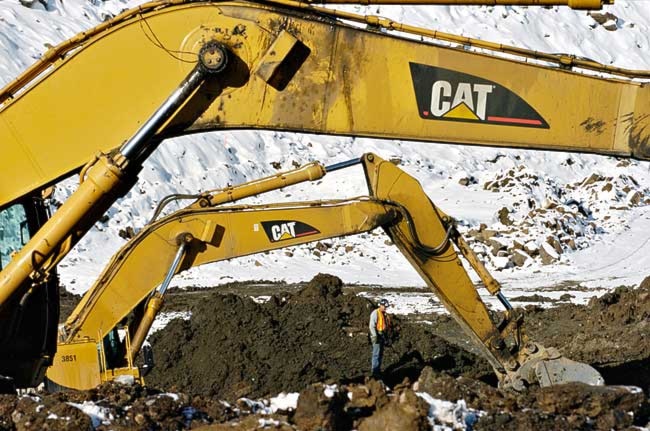Yukon’s New Democratic Party wants to raise mining royalties.
But the proposal is a non-starter with both the governing Yukon Party and the Liberal opposition, which became clear during legislative debates earlier this sitting.
“We get more from campground fees than we do as a royalty from mines in the Yukon at this moment,” said NDP Leader Elizabeth Hanson. “This is not the 19th century. It’s the 21st century and Yukoners expect a fair rate of return for their resources.”
The territory collected $19,500 in placer mining royalties for 2010-11. It collected $23,950 in campground fees during that period.
As for hardrock royalties? The Yukon government has never collected them since assuming responsibility for the territory’s natural resources in 2003.
Prior to then, Ottawa collected Yukon’s mining royalties. The last time it did so was in 1997, before the Faro mine closed.
Capstone Mining Corporation’s Minto mine was, until last year, the only operating hardrock mine in the Yukon. It sits on the Selkirk First Nation’s land, so royalties are collected by the First Nation. In November, the company paid out $5.9 million in royalties.
Alexco Resource’s Bellekeno mine and Yukon Zinc Corporation’s Wolverine mine both recently opened. They sit on public land. But it often takes at least a year for a mine to turn a profit, so the territory doesn’t expect to collect royalties in 2011, either.
The royalty debate revived after the Northwest Territories signed, in late January, a devolution deal with Ottawa that looks considerably better than what Yukon has. The NWT is allowed to keep half of its royalties, up to a certain percentage.
In contrast, the Yukon is only allowed to collect $3 million in resource revenues. Anything more will flow to Ottawa.
The Yukon is coming close to hitting its cap, even without hardrock royalties. Last year, it collected $2.4 million in resource revenues - a broad category that includes fees on mining permits, claim tags as well as forestry-related fees and land sales.
Of that, $1.66 million came from assorted mining fees.
The current mining boom looks as if Yukon could miss out on a lot of money, unless the cap is adjusted. To take one dramatic example, if a mine is ever built at Western Copper Corporation’s massive Casino project, it could generate $250 million in royalties annually.
Every political party in the Yukon supports efforts to remove the $3 million cap. But the NDP wants to go much further, by holding a summit to discuss “modernizing our resource royalty regime,” among other matters. The proposal was debated, and defeated, on February 23.
Premier Dennis Fentie warned such measures could scare away miners and make the Yukon less competitive when compared to other jurisdictions
“It’s not about modernizing anything. It’s about restricting it. We all know what happens when the NDP takes these positions. It drives the industry out of the territory.”
Liberal Leader Arthur Mitchell also dismissed the proposal.
“For Yukon to embark on another lengthy consultation” would be “a step backward from the level of self-government and responsible government we’ve already reached,” he said.
“We don’t think it’s logical to hold off on this while there are potentially millions of dollars at issue, because these negotiations are not going to go quickly. We know that from past history.”
“Yukon’s low royalty rates for placer mining and quartz mining are ... a major factor in encouraging investment and economic activity,” said Brad Cathers, independent MLA for Lake Laberge, who once served as the Yukon Party’s Mines minister.
He blamed the past NDP government for “in large part” causing the mining industry’s last collapse.
And Yukon’s Quartz Mining Act had already been modernized, under his watch, when royalty rates were lowered several years ago -“a key factor in our record-high exploration,” said Cathers.
“Of course, there were some significant discoveries,” he added.
But “those discoveries wouldn’t have occurred if the mining industry wasn’t in the territory, as they weren’t - or most of them weren’t - under the dark days under the NDP and under the Liberals.”
Nonsense, retorted the NDP’s Steve Cardiff.
Commodity prices are far more influential than the territorial government of the day on the health of Yukon’s mining industry, he said.
“If you looked around the world, it wasn’t just the mining sector here in the territory, but, indeed, around the world, that was involved in that downturn.”
Cardiff, a sheetmetal worker by trade, has worked on many minesites.
“I know which side my bread is buttered on, but all we’re saying is that it’s fair to have that discussion.”
If the territory collected more money from miners, it could afford to invest more in government services.
“Whether it be in education ... health care, home care, continuing care for seniors or housing for the hard to house,” said Cardiff. “We’re watching this slip through our fingers.”
Hanson even suggested the Yukon could copy jurisdictions such as Alberta and Alaska to set up a heritage fund for resource royalties, to ensure that “we have not left our children and our children’s children with nothing to rely upon into the future.”
Fentie called this idea “ridiculous.”
It’s “a complete fallacy” to compare the Yukon to Alberta, because “Albertans own their resources,” while Yukoners do not, he said.
Contact John Thompson at
johnt@yukon-news.com.
